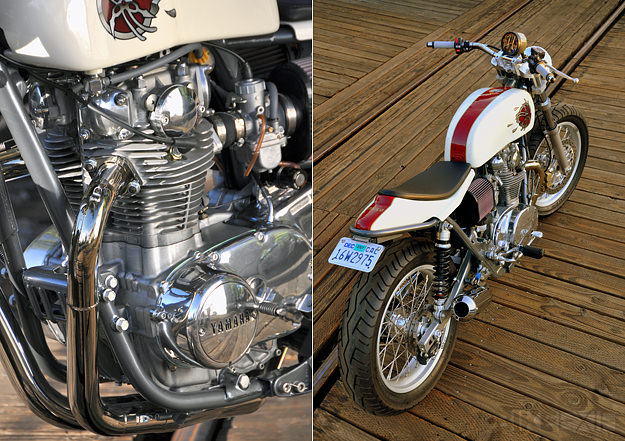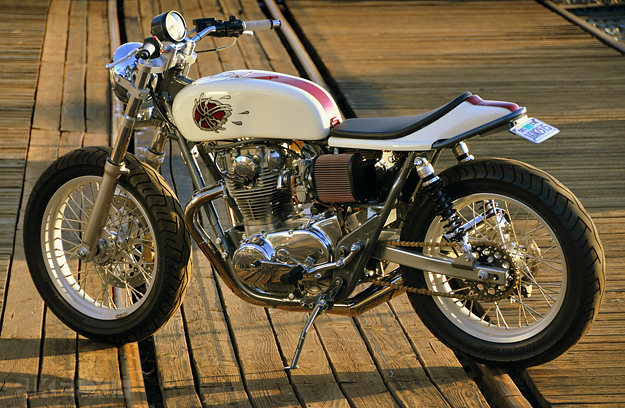
By David Edwards — Richard Pollock knows a thing or two about street-trackers. Doing business as Mule Motorcycles out of a converted two-car garage in suburban San Diego, he’s built about 100 trackers to date, and shows no signs of slowing down. In fact, now that his full-time job as an aerospace fabricator has morphed into part-time consultancy, he has more time than ever to devote to two-wheelers, including doing R&D and prototyping for Streetmaster, a small Southern California speed house for new Triumph Bonnevilles.
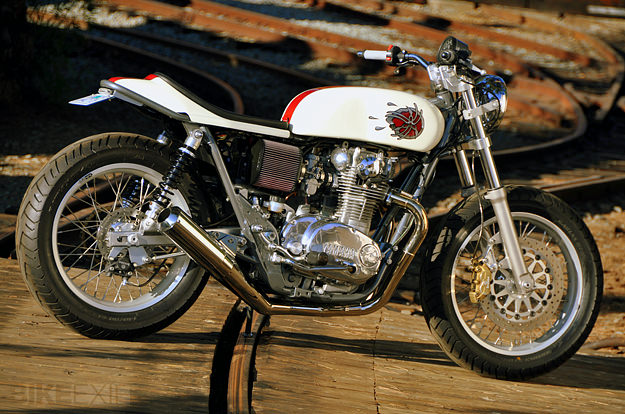
Pollock’s bread and butter, though, are specials based on two powerplants: Harley-Davidson’s Evo Sportster V-twin and Yamaha’s venerable XS650, the so-called “Japanese Bonneville” and about as good an air-cooled parallel-twin as anybody has ever made. Mule’s latest build is an XS650 with a difference. Strictly speaking it’s not a street-tracker; there are touches of café-racer mixed in. Let’s call it, then, a “café-tracker.”
Another difference is that it was built to a price. The owner, an Australian, had a bottom line that was a good $10K below the usual $25,000 to $30,000 that Mule gets for a spokes-up, one-off creation. In retrospect, he should have said no to the budget build, but Pollock likes a challenge, so the Down Under XS was on.
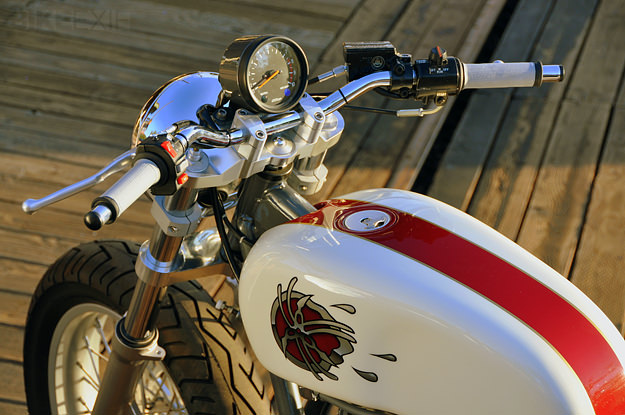
A big chunk of change was saved by using a stock XS650 main frame rather than the heavily massaged, stressed-member unit Pollock usually employs for his Yamahas. Up front, conventional forks from a Buell M2 Cyclone were sourced inexpensively on eBay. Swingarm is from Yamaha’s mid-’80s Radian roadster. It conveniently bolts right up to the XS’s pivot area and is a nice upgrade from the spaghetti-thin stock arm.
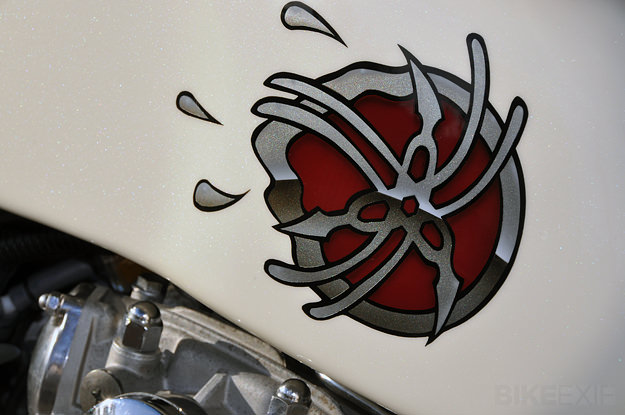
Helping to give the bike its unique hybrid style is an aluminum Storz café-style “bread loaf” fuel tank. Intended to fit a Sportster, the tank needed its tunnel heavily reworked to work with the XS frame’s differently angled backbone. Because the owner wasn’t enamored with the usual kicked-up flat-track tailsection, Pollock grafted on the rear frame loop from a Wood-Rotax with its minimalistic, tightly drawn bodywork. Both tank and tail, looking like they were destined to be together, are finished in a simple paint scheme, a pearl-white and maroon take on the old Yamaha racing colors. Artwork on the gas tank is the company’s classic tuning-fork logo as envisaged by Salvador Dali.
Punched out to 750cc, the mix-n-match XS is now on its way to Australia. This may have been Pollock’s first café-tracker, but given the bike’s undeniable good looks it probably won’t be his last.
